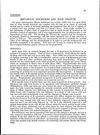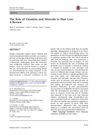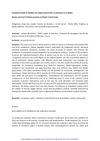TLDR Hair cystine levels may indicate protein malnutrition, but more research is needed.
The study analyzed hair samples from seven sick Ghanaian children to assess protein malnutrition by measuring amino acid content, specifically cystine. Using a specific chemical procedure, the researchers found that the average cystine content in six children with kwashiorkor or marasmic kwashiorkor was about 20% lower than in one child with adequate protein nutrition. Despite these findings, the study highlighted the need for further research due to conflicting evidence regarding the relationship between hair cystine content and nutrition. No other significant differences in amino acid composition were observed.
11 citations
,
November 1966 in “Experimental Biology and Medicine” Hair diameter can indicate protein status in malnourished children if sample location is controlled.
 November 2019 in “Harper's Textbook of Pediatric Dermatology”
November 2019 in “Harper's Textbook of Pediatric Dermatology” Understanding normal hair growth and loss in children is key to diagnosing and treating hair disorders.
 15 citations
,
January 1971 in “British Journal of Dermatology”
15 citations
,
January 1971 in “British Journal of Dermatology” Hair can indicate early signs of metabolic disorders, with issues like protein deficiency stopping hair growth.
 134 citations
,
December 2018 in “Dermatology and Therapy”
134 citations
,
December 2018 in “Dermatology and Therapy” Some vitamins and minerals like vitamin D and iron can help with certain types of hair loss, but more research is needed for others.
 5 citations
,
January 2003 in “Oilseeds and fats, crops and lipids/OCL. Oilseeds & fats crops and lipids”
5 citations
,
January 2003 in “Oilseeds and fats, crops and lipids/OCL. Oilseeds & fats crops and lipids” Vegetable protein lowers cholesterol and protein deficiency can cause health issues.
23 citations
,
January 1981 Hair is mostly made of three protein types: helical, high-sulfur, and high-tyrosine.



